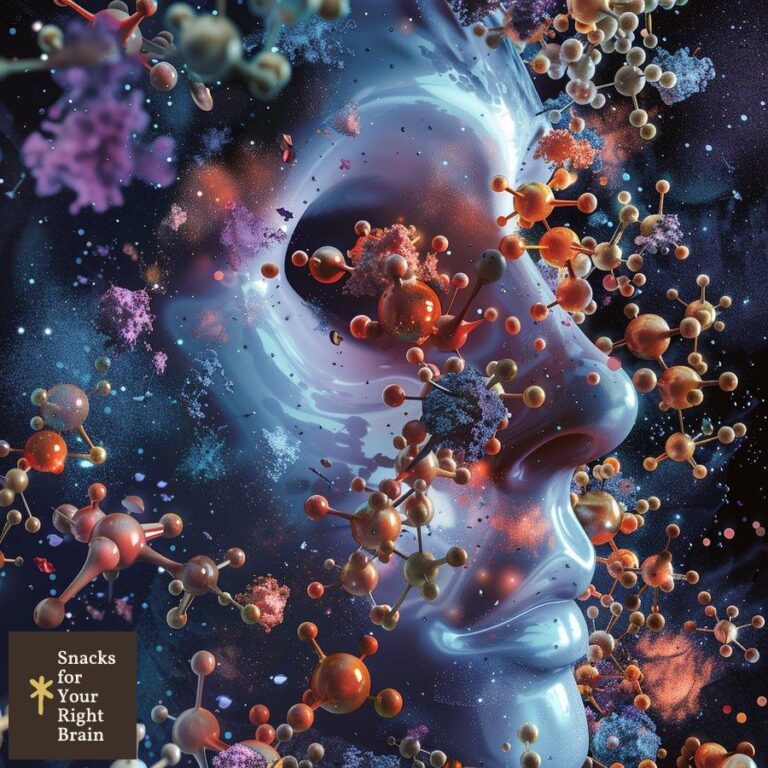How to Improve Concentration While Writing
Writing demands intense focus and concentration. Whether you’re crafting a short story, penning a novel, or composing an article, the ability to maintain unwavering attention is essential for producing high-quality work. This comprehensive guide explores various strategies and techniques to enhance your concentration while writing, helping you become a more productive and effective writer.
Why is concentration crucial for effective writing?
Concentration forms the backbone of effective writing. It allows writers to immerse themselves fully in their craft, resulting in coherent, engaging, and impactful prose. When writers maintain focus, they can:
Maintain narrative flow: Concentrated writers can seamlessly connect ideas, ensuring a smooth progression of thoughts throughout their work. This continuity enhances readability and keeps readers engaged.
Develop complex characters and plots: Deep concentration enables writers to delve into the intricacies of their characters’ psyches and construct intricate plot lines. This depth adds richness and authenticity to the story.
Capture nuanced emotions: Focused writers can accurately portray subtle emotional shifts and complex feelings, creating more relatable and compelling narratives.
Improve language and style: Concentration allows writers to carefully select words, craft vivid descriptions, and refine their unique voice. This attention to detail elevates the overall quality of the writing.
Minimize errors: Writers who maintain focus are less likely to make grammatical mistakes, plot inconsistencies, or factual errors. This reduces the need for extensive editing and revisions later.
Increase productivity: Concentrated writing sessions result in more words on the page and faster completion of projects. This efficiency is particularly valuable for writers working under deadlines.
Enhance creativity: When writers are fully focused, they can tap into their creative wellspring more easily, generating innovative ideas and unique perspectives.
The impact of poor concentration on writing quality is significant. Distracted writers often produce disjointed narratives, flat characters, and superficial descriptions. Their work may lack the depth and nuance that comes from sustained focus. Additionally, frequent interruptions can lead to inconsistencies in tone, style, and plot, diminishing the overall impact of the piece.
Developing strong concentration skills is not just about improving the final product; it also enhances the writing experience itself. Writers who can maintain focus often find themselves in a state of flow, where time seems to disappear, and words flow effortlessly. This immersive experience can be deeply satisfying and motivating, encouraging writers to continue honing their craft.
How can you create an ideal writing environment?
Creating an optimal writing environment is crucial for maintaining concentration and fostering creativity. A well-designed space can minimize distractions and promote focus, allowing writers to immerse themselves fully in their work. Here are several strategies to craft the perfect writing sanctuary:
Choose the right location: Select a quiet, comfortable space where you can write without interruptions. This could be a dedicated home office, a cozy corner in your living room, or even a local library. The key is consistency – using the same space regularly can help train your brain to associate that area with focused writing.

Optimize lighting: Proper lighting is essential for reducing eye strain and maintaining alertness. Natural light is ideal, so position your desk near a window if possible. If natural light is limited, invest in a good-quality desk lamp with adjustable brightness to suit different times of day.
Ensure ergonomic comfort: A comfortable writing setup is crucial for long writing sessions. Invest in a supportive chair that promotes good posture and a desk at the appropriate height. Consider using a standing desk or a convertible sit-stand desk to vary your position throughout the day.
Minimize visual clutter: A cluttered space can lead to a cluttered mind. Keep your writing area tidy and organized. Use storage solutions to keep necessary items within reach but out of sight. A clean, minimalist environment can help reduce mental distractions.
Control noise levels: Depending on your preferences, you may work best in complete silence or with some background noise. If you prefer quiet, consider using noise-canceling headphones or a white noise machine to block out disruptive sounds. If you work well with ambient noise, create a playlist of instrumental music or nature sounds that won’t compete for your attention.
Regulate temperature: Maintain a comfortable temperature in your writing space. Being too hot or too cold can be distracting and affect your concentration. Use a fan, space heater, or adjust your thermostat as needed to create the ideal writing climate.
Incorporate inspiring elements: Surround yourself with items that inspire your writing. This could include artwork, quotes from favorite authors, or objects related to your current project. These visual cues can help maintain your motivation and focus.
Establish boundaries: If you share your living space with others, communicate the importance of your writing time and space. Set clear boundaries to minimize interruptions during your designated writing hours.
Optimize your digital environment: Your physical space isn’t the only environment that matters. Organize your digital workspace by creating a clean desktop, using writing software that offers a distraction-free mode, and closing unnecessary browser tabs or applications.
Experiment with different setups: Every writer is unique, so what works for one may not work for another. Don’t be afraid to experiment with different configurations until you find the perfect setup that enhances your concentration and productivity.
By carefully crafting your writing environment, you create a space that signals to your brain it’s time to focus and create. This intentional approach to your surroundings can significantly improve your ability to concentrate and produce your best work.
What pre-writing routines can enhance focus?

Establishing effective pre-writing routines can significantly boost your concentration and set the stage for productive writing sessions. These rituals help transition your mind from daily distractions to a focused writing mindset. Here are several pre-writing routines that can enhance your focus:
Mindful meditation: Begin your writing session with a short meditation practice. Even 5-10 minutes of mindfulness can help clear your thoughts and center your focus on the task ahead. Use guided meditation apps or simply practice deep breathing exercises to calm your mind.
Freewriting exercises: Engage in a brief freewriting session before diving into your main project. Set a timer for 5-10 minutes and write continuously without stopping to edit or censor yourself. This practice helps loosen up your writing muscles and can generate unexpected ideas for your work.
Physical warm-up: Light physical activity can increase blood flow to your brain and boost alertness. Try a short yoga sequence, stretching routine, or a brisk walk around the block before sitting down to write.
Organize your thoughts: Spend a few minutes outlining your writing goals for the session. Jot down key points you want to cover or scenes you plan to write. This roadmap can help maintain your focus once you begin writing.
Clear your mental clutter: Take a moment to write down any pressing thoughts, tasks, or worries unrelated to your writing. This “brain dump” can help clear your mind and allow you to focus solely on your writing project.
Create a writing playlist: If you find music helpful, curate a playlist specifically for writing. Choose instrumental tracks or songs in a language you don’t understand to avoid lyrical distractions. Play this playlist as a cue to your brain that it’s time to write.
Prepare your writing space: Take a few minutes to tidy your workspace, gather necessary materials, and ensure you have water or tea nearby. A clean, organized environment can promote a clear, focused mind.
Review previous work: If you’re continuing a project, briefly review what you’ve written previously. This refreshes your memory and helps you maintain consistency in tone and content.
Set intentions: Establish clear, achievable goals for your writing session. Be specific about what you want to accomplish, whether it’s a word count target or completing a particular scene or section.
Implement a focus-boosting ritual: Develop a unique ritual that signals the start of your writing time. This could be lighting a specific candle, putting on writing glasses, or reciting a personal mantra. Consistently using this ritual can train your brain to enter a focused state more quickly.
Disconnect from technology: Before starting, turn off notifications on your phone and close unnecessary browser tabs or applications on your computer. This reduces the temptation to check social media or email during your writing time.
Hydrate and nourish: Ensure you’re well-hydrated and have a light snack if needed. Dehydration and hunger can be significant distractions, so addressing these physical needs beforehand can help maintain your focus.
By incorporating these pre-writing routines into your schedule, you create a transition period that prepares your mind and body for focused writing. Experiment with different combinations to find the routine that works best for you, and be consistent in applying it before each writing session. Over time, these rituals will become powerful cues that help you quickly enter a concentrated writing state.
Which focus-enhancing techniques work best for writers?
Writers can employ various focus-enhancing techniques to maintain concentration during their writing sessions. These methods help combat distractions, increase productivity, and improve the quality of work. Here are some of the most effective techniques for writers:
Pomodoro Technique: This time management method involves working in focused 25-minute intervals (called “Pomodoros”), followed by short 5-minute breaks. After four Pomodoros, take a longer break of 15-30 minutes. This technique helps maintain concentration by breaking work into manageable chunks and providing regular rest periods.
Deep Work: Coined by Cal Newport, deep work refers to the practice of working for extended periods without distractions on cognitively demanding tasks. For writers, this might mean scheduling blocks of 2-4 hours for focused writing, during which all potential interruptions are eliminated.
Mindful Writing: Practice being fully present and aware while writing. Pay attention to the sensations of typing or writing by hand, the flow of ideas, and the process of crafting sentences. This mindfulness can help maintain focus and deepen your connection to your work.
Time Blocking: Allocate specific time blocks for different writing tasks. For example, dedicate the morning hours to creative writing and the afternoon to editing or research. This structured approach can help maintain focus by clearly defining the purpose of each work session.
Progressive Deadlines: Set small, achievable deadlines throughout your writing process. These mini-goals can help maintain motivation and focus, especially for longer projects. Celebrate each milestone to reinforce the positive habit.
Visualization: Before writing, spend a few moments visualizing your characters, settings, or the structure of your piece. This mental preparation can help you dive more quickly and deeply into your writing when you begin.
Focused Free Writing: Set a timer for 10-15 minutes and write continuously about your project without stopping to edit or second-guess yourself. This technique can help overcome writer’s block and generate new ideas while maintaining focus.
Background Noise Control: Experiment with different types of background noise to find what helps you focus best. Options include white noise, nature sounds, instrumental music, or even coffee shop ambiance. Use noise-canceling headphones if you need to block out environmental distractions.
Focus Apps: Utilize apps designed to enhance concentration. Some popular options for writers include:
- Forest: Encourages focus by growing virtual trees while you work
- Freedom: Blocks distracting websites and apps
- RescueTime: Tracks how you spend your time and provides focus tools
Reward System: Implement a personal reward system for meeting your writing goals. These rewards can serve as motivation to maintain focus during challenging writing sessions.
Accountability Partners: Partner with another writer or join a writing group where members check in on each other’s progress. The knowledge that someone else is aware of your goals can be a powerful motivator to stay focused.
Sensory Anchors: Create sensory cues that signal it’s time to write. This could be a specific scent (like a particular essential oil), a tactile sensation (like wearing writing gloves), or a visual cue (like a special desk lamp). Consistently using these anchors can train your brain to enter a focused state more quickly.
Monotasking: Commit to working on one writing task at a time. Avoid the temptation to switch between multiple projects or to mix writing with other activities. This singular focus can significantly improve concentration and productivity.
Energy Management: Identify your peak energy times and schedule your most demanding writing tasks during these periods. Working with your natural rhythms can enhance focus and creativity.
Distraction List: Keep a notepad nearby to jot down any distracting thoughts or tasks that come to mind while writing. This allows you to acknowledge these thoughts without breaking your focus, knowing you can address them later.
The effectiveness of these techniques can vary from writer to writer. It’s important to experiment with different methods and combinations to find what works best for your unique writing style and preferences. Regularly assess and adjust your focus-enhancing strategies to ensure they continue to serve your writing goals effectively.
How can technology improve writing concentration?

While technology is often viewed as a source of distraction, when used intentionally, it can significantly enhance a writer’s ability to concentrate. Various digital tools and applications are designed specifically to boost focus, streamline the writing process, and create an environment conducive to sustained concentration. Here’s how technology can be leveraged to improve writing concentration:
Distraction-blocking software: Applications like Freedom, Cold Turkey, and FocusMe allow writers to block access to distracting websites and apps during designated writing periods. These tools can be customized to fit individual needs and schedules, effectively eliminating common digital temptations.
Writing-specific software: Programs like Scrivener, yWriter, and Ulysses offer distraction-free writing environments with features tailored to long-form writing projects. These applications often include full-screen modes, organizational tools, and progress tracking to keep writers focused and motivated.
Noise-canceling headphones: Advanced noise-canceling technology can create a bubble of silence even in noisy environments. This can be particularly useful for writers who work in shared spaces or need to block out environmental distractions.
Ambient sound generators: Apps like Noisli, myNoise, and A Soft Murmur provide customizable background sounds that can enhance focus. Writers can create the perfect audio environment, whether it’s the buzz of a coffee shop, the sound of rainfall, or white noise.
Pomodoro timers: Digital Pomodoro timers help writers implement the Pomodoro Technique effectively. Apps like Forest, Focus Keeper, and Be Focused not only track work intervals but also gamify the experience, adding an extra layer of motivation to stay concentrated.
Text-to-speech software: Tools that read text aloud can help writers maintain focus during the editing process. Hearing your work read back can highlight areas that need improvement and keep you engaged with the material.
Voice recognition software: For writers who find typing distracting or physically challenging, voice recognition tools like Dragon NaturallySpeaking can allow for hands-free composition, potentially increasing focus and productivity.
Cloud storage and synchronization: Services like Dropbox, Google Drive, and iCloud ensure that your work is always accessible and up-to-date across devices. This eliminates the distraction of file management and the worry of losing work.
Project management tools: Applications like Trello, Asana, or Notion can help writers organize complex projects, set deadlines, and track progress. Having a clear overview of your writing goals and tasks can enhance focus by providing structure and direction.
Focus music streaming: Services like Brain.fm, Focus@Will, and Endel offer scientifically designed music and soundscapes aimed at enhancing concentration and productivity.
E-ink tablets: Devices like the reMarkable tablet or Onyx Boox provide a paper-like writing experience with the benefits of digital storage and organization, potentially reducing the eye strain and distractions associated with traditional screens.
Time tracking software: Apps like RescueTime and Toggl can monitor how you spend your time on your devices. This awareness can help identify and eliminate time-wasting habits, leading to improved focus during writing sessions.
Virtual reality (VR) writing environments: Emerging VR applications allow writers to create immersive, distraction-free writing spaces. These virtual environments can be customized to individual preferences, potentially enhancing focus and creativity.
Ergonomic technology: Smart desks that remind you to change positions, ergonomic keyboards, and posture-correcting devices can improve physical comfort during long writing sessions, indirectly enhancing concentration by reducing physical distractions.
Blue light filtering: Software like f.lux or built-in features like Night Shift on macOS adjust your screen’s color temperature based on the time of day, potentially reducing eye strain and improving focus, especially during evening writing sessions.
While these technological solutions can be powerful allies in improving writing concentration, it’s important to use them mindfully. The key is to select tools that genuinely enhance your writing process without becoming distractions themselves. Experiment with different technologies to find the combination that best supports your unique writing style and concentration needs.
Remember that technology should complement, not replace, fundamental concentration techniques. The most effective approach often combines technological aids with traditional focus-enhancing practices, creating a holistic strategy for maintaining concentration while writing.
What role does physical and mental well-being play in writing focus?

Physical and mental well-being are foundational elements in a writer’s ability to maintain focus and produce quality work. The interconnectedness of body and mind significantly influences cognitive functions, creativity, and sustained concentration. Understanding and nurturing this relationship is crucial for writers seeking to enhance their focus and overall productivity.
Physical Well-being and Writing Focus
Physical health directly impacts a writer’s ability to concentrate and engage in prolonged writing sessions. Here’s how various aspects of physical well-being affect writing focus:
Exercise: Regular physical activity boosts brain function, improves mood, and enhances cognitive abilities.






